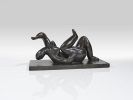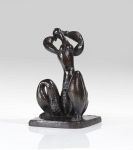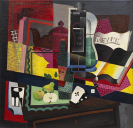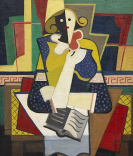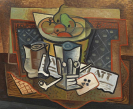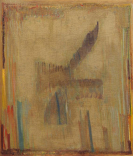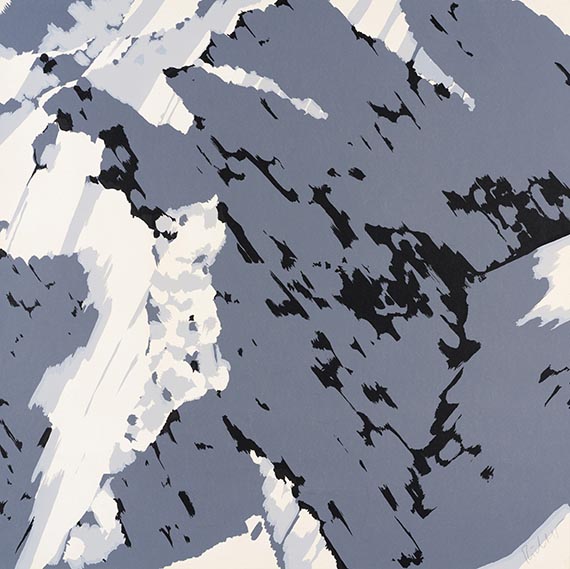
Emil Filla
Chropyne/Mähren
1882 -
Prag
1953
The beginnings of modern Czech art and painting, particularly Cubism, are inextricably linked with the name Emil Filla. After training under Franz Thiele and Vlaho Bukovac at the Prague Fine Arts Academy, he travelled extensively before joining other young artists, among them Procházka and Kubín, to found the group "Osma" (the Group of Eight) in 1907. Osma was under the sway of both the Paris Fauves and "Die Brücke".
To Filla, however, Munch's "marine painting" was also important and, a few years later, the influence of El Greco became apparent in his work. In 1909 Emil Filla joined the venerable secessionist artists association "SVU Mánes" but left it in 1911 to join forces with fourteen other young avant-garde artists to found "Skupina", which was the centre of Czech Cubism until 1914.
Emil Filla, working as an art agent at that time, kept abreast of trends in Paris and Germany, procuring for himself and friends reproductions of paintings by Picasso, Braque and "Negro sculpture". The sculptures he did in this phase, such as "Relief of a Head" and "Head of a Man" (1913-14: both in the Prague National Gallery) are, with the works of Gutfreund, among the earliest Cubist sculptures and can be classified as an independent reaction to Picasso's "Fernande" (1909).
In 1914 Emil Filla was in Paris with Gutfreund and met both Braque und Picasso. He married Hana Krejcová and moved with her to Amsterdam, where he joined the anti-Habsburg resistance group "Mafia". He entertained a close dialogue with the Dutch abstractionists and was implored by Theo van Doesburg to work for the journal "De Stjil" but by 1920 Filla had returned to Prague. There he participated in almost all nation-wide exhibitions with works dealing with the human figure.
He developed what he called the "Animal of the Steppe's Style" in reaction to fascism. Inspired by Scythian reliefs and executed in various techniques, this style highlights combats between man and animals or animals fighting other animals.
Filla was interned during the war years 1939-45 in the concentration camps at Dachau and Buchenwald, where he wrote the book "On Freedom".
In 1945 the "Mánes" devoted their first post-war exhibition to Filla's work. That year he was appointed professor at the Prague Applied Arts Academy and the government made it possible for him to show his collection of Buddhist, Czech, African and Italian art permanently at Peruc Castle.
After the communist take-over, he spent the last years of his life in retirement, painting landscapes revealing his intensive preoccupation with Chinese painting.
Would you like to sell a work by Emil Filla?
Infos for seller
